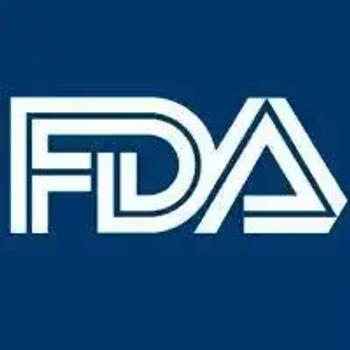
Intervention to increase fluid intake does not reduce recurrent stones
Key Takeaways
- The intervention program modestly increased urine production but did not significantly reduce recurrent stone events compared to standard care.
- Participants in the intervention arm received a "fluid prescription" and financial incentives, but no significant impact on symptomatic stone recurrence was observed.
“We do not feel that our results undermine the importance of fluid intake for stone prevention," says Alana C. Desai, MD.
Results from the PUSH study (NCT03244189) showed that a behavioral intervention program to maintain high fluid intake for prevention of urinary stone disease (USD) modestly increased urine production but did not reduce recurrent stone events compared with standard care.1
The data were presented by Alana C. Desai, MD, of the University of Washington, at the
“We hypothesized that a program [of] behavioral intervention to increase fluid intake will reduce the risk of stone disease recurrence in stone-forming patients with a low urine volume vs usual care,” Desai explained during the presentation.
The study enrolled a total of 1658 patients who were randomly assigned 1:1 to receive the intervention (n = 826) or to the control arm (n = 832). The study enrolled adults and adolescents aged 12 years and older.
Patients in both arms received a wireless smart water bottle. In the intervention arm, patients received a “fluid prescription” plus the behavioral intervention program targeting guideline-based fluid intake. These patients were required to use the smart water bottle to measure fluid intake. Patients in the control arm received guideline-concordant recommendations on fluid intake, but they were not required to use the smart water bottle.
Participants in the intervention arm also received loss-framed financial incentives, where payment was not given for failure to reach fluid goals.
The primary outcome was a symptomatic stone event, defined as stone passage, symptomatic stone requiring surgery, or an asymptomatic stone undergoing surgery. Secondary end points included asymptomatic stone formation, stone growth of at least 2 mm, 24-hour urine volume, lower urinary tract symptoms, and a composite outcome of symptomatic stone recurrence, asymptomatic stone formation, and an increase of more than 2 mm in stone size.
Overall, at a median of 738 days, 18.6% of patients in the intervention arm experienced a symptomatic recurrence of USD vs 19.8% in the control arm. Kaplan-Meier curves showed that at 2 years, these rates were 19.6% and 21.1%, respectively.
Desai also reported, “[On] our secondary outcome of 24-hour urine volume, the most proximate outcome to our intervention, we found there to be a significant increase in urine output in the intervention arm at all time points, with the difference decreasing over time, but still remaining significant at 24 months.”
A new asymptomatic stone was formed in 2.3% of patients in the intervention arm vs 2.8% of patients in the control arm (OR, 0.83; 95% CI, 0.45 to 1.53; P = .548). Additionally, stone growth of 2 mm or more was reported in 4.7% of patients in the intervention arm vs 3.0% of patients in the control arm (OR, 1.60; 95% CI, 0.96 to 2.67; P = .072). There was also no difference observed between the groups in regard to the study’s composite outcome (both, 23.7%; OR, 1.01; 95% CI, 0.80 to 1.27; P = .935).
Data also showed that patients in the intervention arm reported greater lower urinary tract symptoms at months 6 and 12, but not at any other time points.
Regarding safety, hyponatremia was reported in 1.5% (12) of patients in the intervention arm vs 0.2% (2) of patients in the control arm (OR, 6.12; 95% CI, 1.36 to 27.4; P = .018). No instances of hyponatremia required hospitalization.
Based on these findings, Desai noted, “In summary, PUSH was a high-quality trial. It's the largest stone prevention trial to date. Target enrollment and primary outcome events exceeded our projections, and our attrition rate was lower than projected. We also had a very high study completion rate of over 82%.”
However, the data did not show a difference in clinical stone-related outcomes with the intervention.
Overall, Desai concluded, “We do not feel that our results undermine the importance of fluid intake for stone prevention, as this remains a low-cost, low-risk intervention. Rather, our results suggest that while an intensive behavioral intervention alone was insufficient to yield significant clinical benefit, perhaps simpler patient-centered strategies, reinforcing standard of care recommendations, is a more practical and impactful approach to secondary stone prevention.”
REFERENCE
1. Desai A, Maalouf N, Harper JD, et al. Prevention of urinary stones with hydration: A randomized clinical trial. J Urol. 2025;213(5S2):e5. doi:10.1097/01.JU.0001111604.90306.91.09
Newsletter
Stay current with the latest urology news and practice-changing insights — sign up now for the essential updates every urologist needs.















